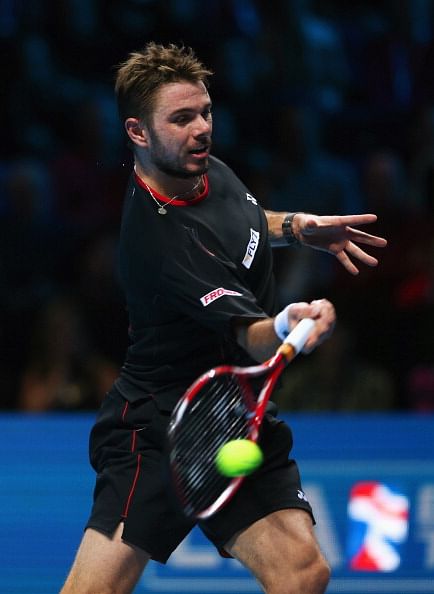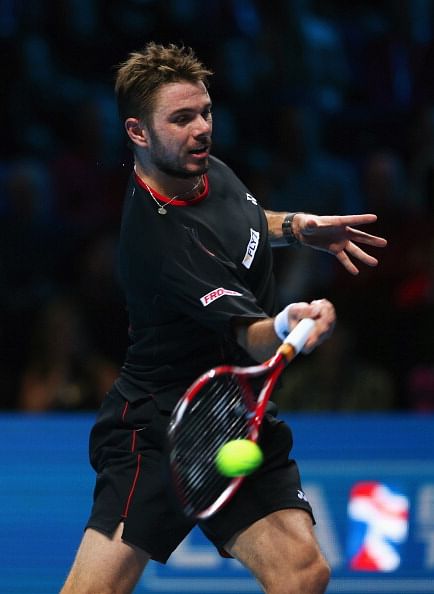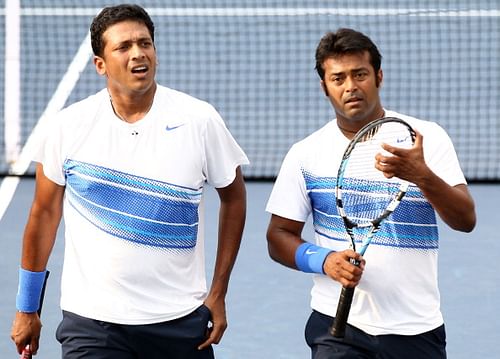
Musings on the Chennai Open

Stanislas Wawrinka – Top Seed for the 2014 Chennai Open
I am at the gates of the SDAT Tennis Stadium in the city of Chennai. We are just three days away from the beginning of the Chennai Open – India’s, nay, South Asia’s only event on the annual ATP calendar, but you wouldn’t know it standing outside the stadium today. It’s a quiet afternoon with not too many signs of activity, quite like any other day of the year.
I walk up to the ticket counter to pick up some tickets for the tournament next week. I am greeted by a solitary, bored police constable responsible for keeping the non-existent crowd of ticket mongers in check. I need to knock on the counter window a couple of times before I get the attention of the man inside. It seems to be a slow day for him.
I decide to take a look inside the stadium and renew my acquaintance with it. After all, there are eighteen seasons of international tennis memories associated with it, and at least twelve years of personal recollections. Inside the stadium, activity is more distinctly visible. Young volunteers with tags around their necks are hurrying around, looking busy. Two lean and fit European men, one in full tennis wear, the other stripped from the waist up and carrying a Babolat kit, stroll past me, chatting with each other. The sponsor stalls are being set up, as are various banners, and what I assume to be the main tournament scoreboard, in front of the centre court. But the workers setting it up don’t seem to be in any real rush, as they take their time slowly assembling the rods and sheets together.
At first sight, everything about the scene is underwhelming for a tennis tournament of this magnitude. But for me, it is a warm sense of familiarity that comes rushing back. Over the years, the Chennai Open has developed an intimate atmosphere of its own. Set in a compact tennis complex, with one showpiece court and half a dozen outside courts, it has always been more cozy than grand, more accessible than awe-inspiring. It has the feel of a neighbourhood tennis event for the world’s best players, and for me, that is its most appealing feature.
Other stadiums across the world offer palpably different tennis-viewing experiences. I remember sitting in the dimly-lit lounge bar settings of the O2 arena in London for the World Tour Finals, straining my eyes to make out if the guy playing in the blue shirt was actually Federer or not. Or at an outside court in Roland Garros, where I had to push and shove a million people for the privilege of catching a glimpse of Giles Simon in practice. Chennai, in comparison, feels like a haven of guilty pleasures. The nature of the tournament and the size of the stadium ensures that the players are more approachable, that they can be viewed at close quarters, can be talked to, can be touched. You feel here the game is played by men of flesh-and-blood, not by some distant tennis immortals.
Last year, during the early rounds on an outside court, I found myself sitting directly behind Stanislas Wawrinka and his team, as he sat among the crowd watching the proceedings, relaxing after his own exertions. As I wished him luck for his matches ahead and watched him casually sign autographs, I remember thinking what a regular bloke he seemed to be.
On another occasion, while walking towards the exit of the centre court during a practice session, my friend and I bumped into Janko Tipsarevic, literally. Even as I apologized, the word “Tipsy” came out inadvertently. The Serb’s lips turned into a scowl directed at me. Whether it was for the physical contact, or for the inappropriate nickname, I will never know.
Close encounters of the tennis kind like these make the Chennai Open a favourite for any tennis fan. Besides, there are, of course, the tennis experiences that have gathered over the eighteen year history of the event, the images that remain.
Boris Becker, at the fag end of his career, playing in the tournament then known as the Gold Flake Open, and receiving one of the longest, most rousing farewell ovations I have heard from any crowd at the end of his appearance.
Rafael Nadal and Carlos Moya battling it out in a record-breaking semi-final encounter, lasting close to four hours. With the kind of gritty display of endurance and courage that would define him in the coming days, Nadal saved multiple match points in the second set, before going on to beat his mentor and Chennai Open favourite, Moya, in three nail-biting sets.
Paradorn Srichapan, the Thai player and another crowd favourite, performing his perfect set of namaskarams at the end of each match. I was never sure what endeared him to the crowd more – his prowess on the court, or his trademark salutations to the audience.

Leander Paes and Mahesh Bhupathi – the most successful doubles team at the Chennai Open
Leander Paes and Mahesh Bhupathi, erstwhile formidable doubles combination, engaging in their trademark mid-air, chest-bump routine. I strongly suspect the practice had its origins in one of the five successful runs they had as a team for the doubles crown at the Chennai Open.
I walk in a daze of comfortable memories today, as I turn into the entrance to centre court. The young girls at the desk are happy to help when I enquire about the day’s practice schedule. I skim through the list, and see that it is Tim Smyczek who occupies centre court with his hitting partner at the moment. Somdev Devvarman is scheduled to take up the next slot. Maybe I will drop in a little later to get a closer look at India’s biggest hope.
As I leave, I see that the workers have made considerable progress with the banners. One large board now displays a female tennis player in the middle of a stroke with a Wilson racket. Her face seems vaguely familiar to me. The ticket counter has a small knot of people around its window now. The police constable seems happy to have something to do.
In the distance, I can hear tennis balls being struck in practice rallies on the outside courts. The sound is soft, rhythmic and reassuring. It is the sound of a brand new ATP season, beginning in our own city of Chennai.